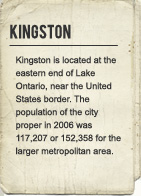Population
Kingston’s Jewish population grew both in numbers and in complexity in the decades following the Second World War. The Eastern European origins of the large majority were enriched by the arrival of a sprinkling of Jews from other parts of the world, including Arab or Muslim countries such as Iraq, Iran and Tunisia. Once the State of Israel came into being, life was made more difficult for Jews in Arab countries and most left these ancient communities, some of which had been in existence for close to two millennia. Other post-war arrivals in Kingston came from Israel and South Africa. Although their roots were in Eastern Europe, the South African Jews had lived long enough in that country to have developed their own culture.
Those who came after the war included professionals and academics, hired by Queen’s University or by the industrial sector, in particular by Alcan and Dupont. By the mid 1970s, some 70 Jews were on staff at the university. The newcomers tended to favour a more liberal approach to Judaism than the traditional, Orthodox founders.
Population numbers continued to increase gradually, reaching 715 in 1971. According to the 2001 census, the Jewish population of Kingston in that year had jumped to 1160. This large increase in population is probably explained mostly by the fact that between 1991 and 2001, Kingston had become a Census Metropolitan Area. To the City of Kingston were added South Frontenac Township, Loyalist Township and Frontenac Islands Township. It is important to note, as Marion Meyer points out in her book The Jews of Kingston, that the unaffiliated Jews of the Kingston area constitute a significant proportion of the total number.







